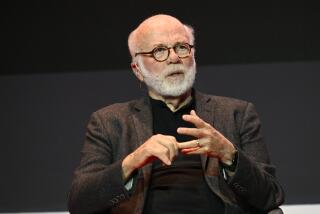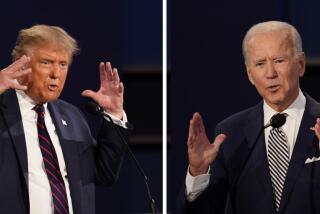D. Cheney, Man of Mystery
- Share via
What is Vice President Dick Cheney trying to hide? In the spring, when Cheney convened his energy task force, he sat down with executives from the oil, electricity and nuclear power industries and kept it all secret. He issued his report in May, but his fetish for secrecy about its origins continues.
The Government Accounting Office and two congressmen, Henry A. Waxman (D-Los Angeles) and John D. Dingell (D-Mich.), are demanding that Cheney tell the public who was on the task force and what was said. The vice president is stonewalling.
The GAO sent Cheney a letter a week ago stating that he was legally obligated to come clean. The vice president’s office claimed that its response, including some requested documents, was already in the mail. But the White House still refuses to divulge the names of the outside consultants it relied upon, so the accounting office is threatening to issue a “demand letter.” It may even sue.
When Hillary Clinton cobbled together her health care plan in the early 1990s, she was rightly attacked for avoiding public scrutiny. Bill Clinton was a master of obfuscation during his presidency, regularly denying Congress documents and files. Now the Bush White House is following suit.
Whenever government officials try to work in secret, they inevitably end up drawing attention to what they’re trying to conceal. Cheney’s task force was arguably more efficient because it worked in quiet, but his stubborn refusal to release the names of those he consulted suggests that the meetings themselves were a charade, designed to rubber-stamp the wishes of his energy industry pals. It also suggests that the Bush White House has picked up some tricks from its predecessor. So much for open government.
More to Read
Get the L.A. Times Politics newsletter
Deeply reported insights into legislation, politics and policy from Sacramento, Washington and beyond. In your inbox three times per week.
You may occasionally receive promotional content from the Los Angeles Times.










